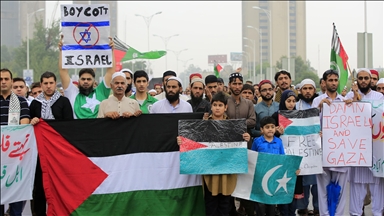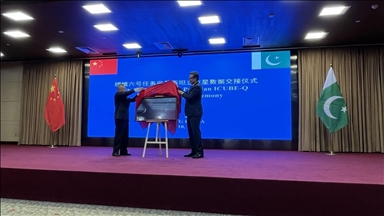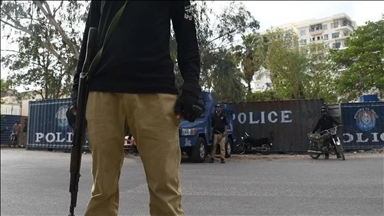
By Aamir Latif
KARACHI, Pakistan
As the deadly heatwave that hit Pakistan last week abates, rival federal and provincial governments have engaged in a blame game over the 1,400 deaths.
But behind the panic, away from the recriminations, were hundreds of ambulance drivers who worked endlessly, shuttling thousands of patients between oversaturated hospitals.
It is thought that some 1,500 ambulances were working in Pakistan's commercial capital Karachi, where most deaths were, with many of the drivers continuing their Ramadan fasts despite the intense work and heat.
“It was a two-way combat,” said Mohammad Bilal, 41, an ambulance driver for the Edhi Foundation, an NGO that runs a fleet of 500 ambulances. “On the one hand we had to cope with the growing number of heatstroke victims and on the other hand we were trying to protect ourselves from the stifling heat.”
The blistering heatwave which for over a week stifled Karachi, and its surrounding southern Sindh province, hit immediately after Ramadan began, with many continuing to fast despite the temperatures, which reach 45 degrees and power cuts.
Sindh’s Chief Minister Syed Qaim Ali Shah said on Monday that the unprecedented heatwave affected more than 12,000 people across the province and that hundreds are still being treated in hospitals.
“My family was worried about my own well being because the news channels kept airing the increasing death toll from the heatwave. I would receive a call every hour from my father and my wife [to ask about my health]," said Bilal, who said the heatwave was the worst situation he'd seen in his decade working as an ambulance driver.
“I did not tell them [the family] but at one time, I was almost collapsed due to severe heat and dehydration and could not move for three hours,” he said.
Mohammad Sharif, 50, an ambulance driver who works for Cheepa Foundation, another social and health NGO, had the same problems as Bilal.
“It was such a hard job to work for 10 to 12 hours in such hot weather. I twice felt that I was going to faint because of dehydration,” Sharif said. “I did not fast during those days but I know many of my colleagues were fasting. I don’t know how they survived.”
Anwar Kazmi, a senior official at the Edhi Foundation, said they had more than 400 drivers involved in the emergency operations but that many of them had to be pulled from duty because of exhaustion, with dozens of them fainting during work.
Kazmi claimed that possibly as many as 4,000 people died during the heatwave. He said the official figures have been based only on the major hospitals and did not include many who died in small hospitals or remote areas.
“It was a doomsday like situation. We would run between the hospitals to find out space for the patients. Even the private hospitals did not have space,” Bilal said. “Many patients died in the ambulances because of this shuttling.”
It was in this kind of scenario that Asfar Imran, a Karachi-based journalist, saw his mother die during the heatwave.
"I was sitting next to her [in the ambulance] as three major hospitals refused to admit her because of the overburden,” said Imran. “She ultimately took her last breath during this rush.”
Anadolu Agency website contains only a portion of the news stories offered to subscribers in the AA News Broadcasting System (HAS), and in summarized form. Please contact us for subscription options.







